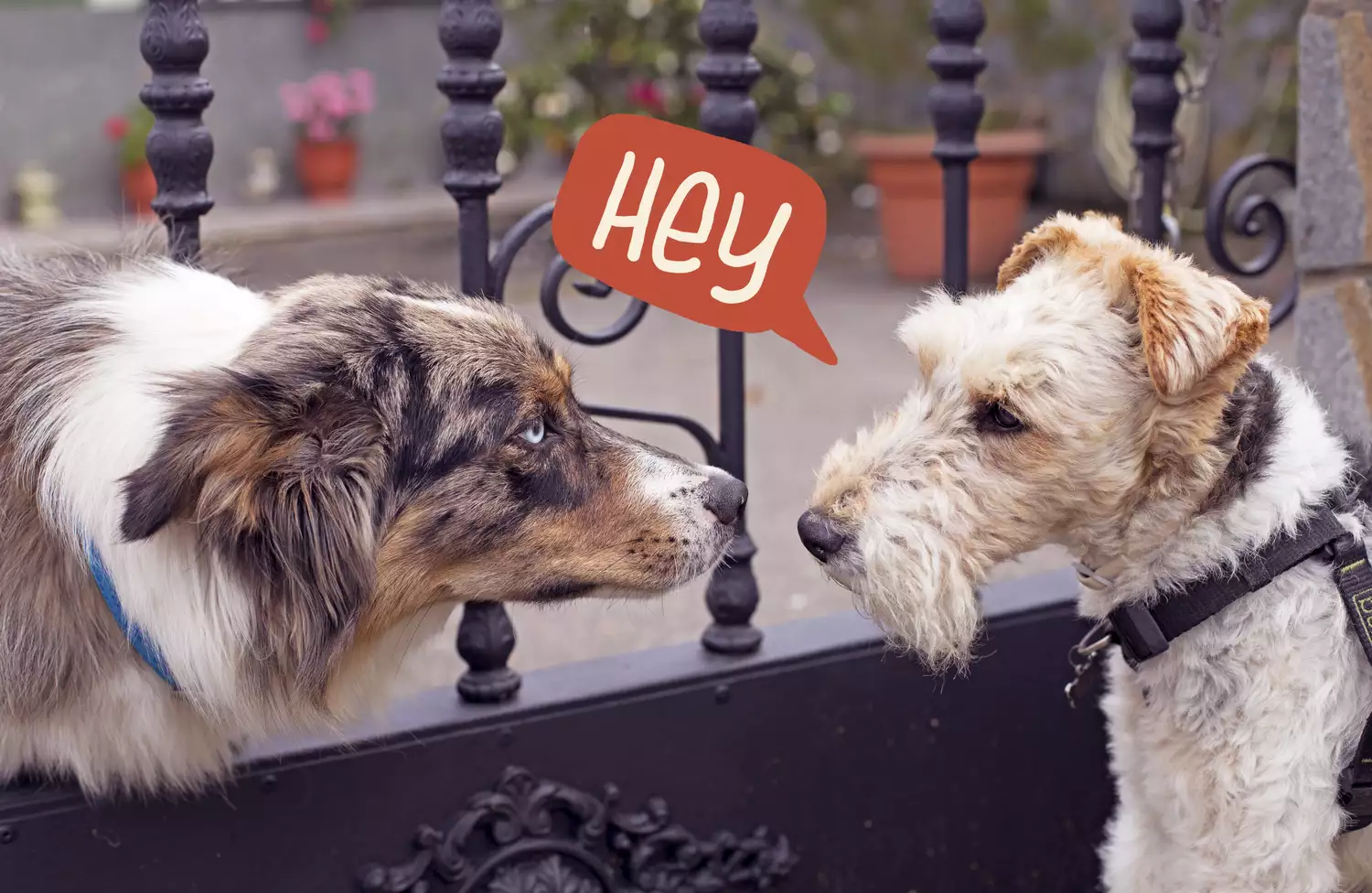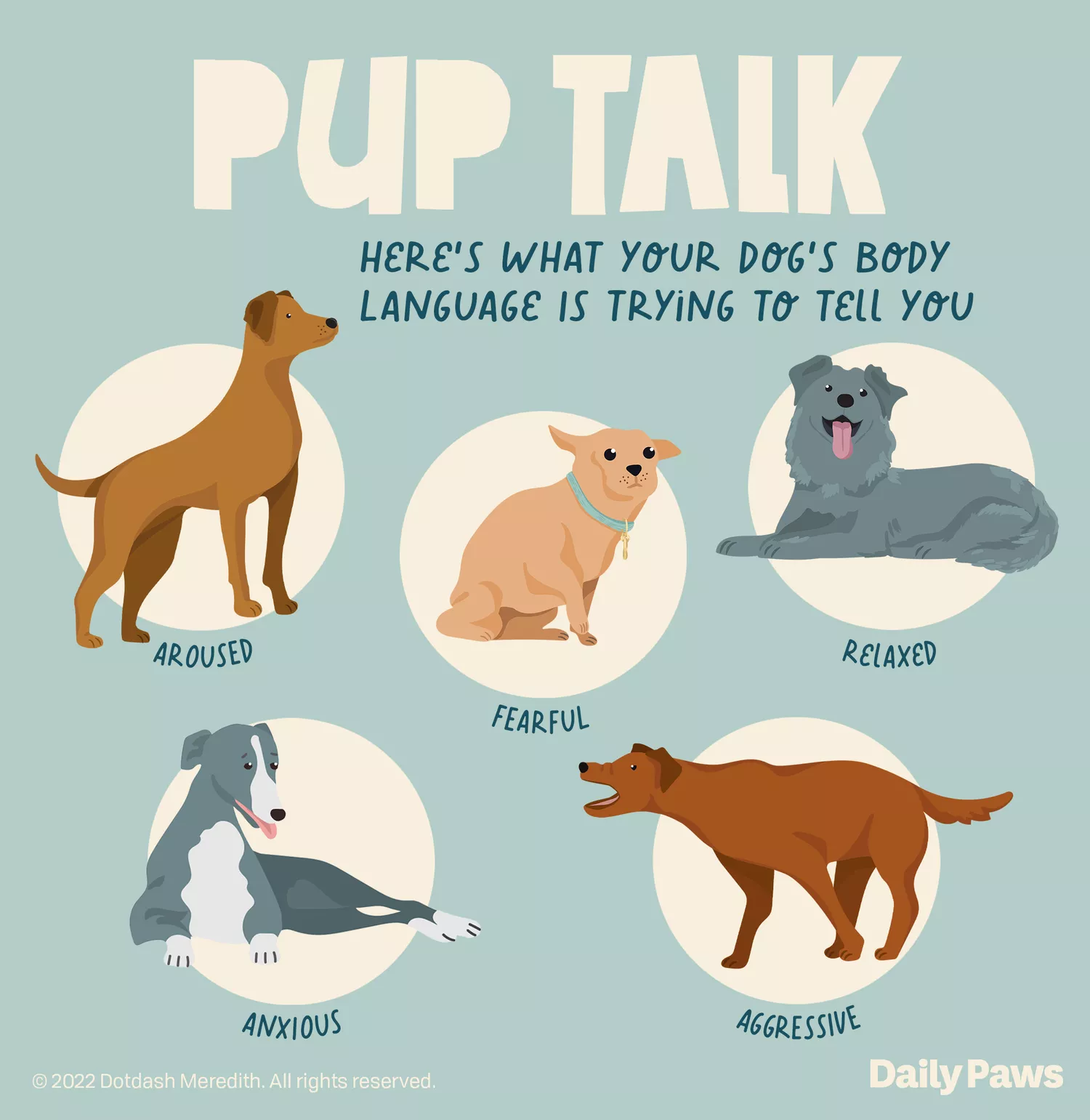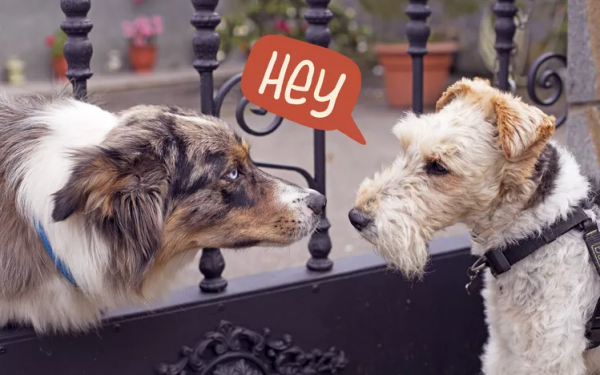When humans think about how dogs communicate with each other, vocalizations like barking and growling tend to be top of mind—even though they represent only a teeny portion of dogs’ rich repertoire. We can blame this erroneous emphasis on the natural tendencies of our own species, says Melissa McMath Hatfield, MS, CBCC-KA, CDBC, owner of Loving Dogs in Fayetteville, Ark. While verbal communication reigns supreme among humans, body language and scent cues often “speak louder” with our furry friends.
While dogs are adept at understanding human nonverbal behavior, unfortunately, humans aren’t as proficient at reading their dogs, Hatfield says.
“This is where miscommunication between the two species can occur, resulting in conflict and possible harm to the dog—if not physically, then certainly to their emotional state. The more we can learn about how dogs communicate with us and with each other, the more enriching our relationship and their lives will become.”
With this end in mind, we’ve enlisted Hatfield’s help to overcome our verbal bias.

Context Matters
Before we can get to the content, Hatfield says we must understand the role of communication’s context. “All communication has to be viewed within its context (i.e., the environment in which it’s taking place),” she continues, “regardless of whether it’s human-to-human, human-to-dog, or dog-to-dog. For example, a dog bounding over to greet his owner with a wagging tail is displaying an appropriate approach behavior. But we certainly don’t want to see a dog excitedly approaching a baby in the same way.”
In other words, behavior that’s fine and even fun and cute in one situation can be inappropriate and dangerous in another (like rolling your eyes when your mom tells you not to touch a plate of chocolate chip cookies vs. when she says not to touch a hot stove).
Similarly, just as you can’t take communication out of its physical environment, it generally isn’t helpful to single out and analyze one communicative action (like barking) from preceding and succeeding actions. Knowing what comes before and after that bark, like a playful wagging tail or fearful raised hackles, is key to understanding the big picture.
How Do Dogs Communicate With Each Other?
When dogs communicate with one another, Hatfield says they put their senses to work. “Dogs use smell, sight, and sound [to communicate with each other],” she explains. “The combination and context of these deliver the specific message.”
Smell
Humans can and do communicate through scent. For example, you could probably tell if your teen sibling took a shower after soccer practice without specifically asking or even looking at them. However, dog noses are on another level. Hatfield notes that dogs have as many as 300 million olfactory receptors in their noses (humans have a paltry six million), resulting in a sense of smell that’s been estimated to be 10,000 to 100,000 times more acute than our own.
Dogs are able to use these spectacular sniffers in impressive (and sometimes embarrassing) ways for the sake of communication. Have you ever wondered why your dog smells other dogs’ hind ends? Hatfield says it may be because the unique scent released by a dog’s anal glands (two small sacs located inside the rectum) communicates details about a pup’s health, sex, diet, social status, and mood. “Dogs can smell adrenaline and pheromones, which can help them determine whether another dog is a friend or foe and whether they should play, fight, or run away.”
Sight and Sound
Picking up on a dog’s pheromones may be beyond your abilities, but your eyes and ears are fully capable of deciphering how dogs use vocalizations (barking, growling, whining) and body language (posture, ear and tail position, eye contact) to communicate with other dogs. These two will need to be considered together because as you’ll remember, context matters!
“A dog’s observable behavior is indicative of their emotional (internal) state,” Hatfield explains, “so it’s imperative to pay close attention to how dogs are communicating with each other and/or with you.”
What Are Dogs Trying to Tell Us?
The Cummings School of Veterinary Medicine at Tufts University breaks down canine communication into five common categories: relaxed, aroused, fearful, anxious, and aggressive. Below, we’ll cover what dogs in these groups look (and sometimes sound) like.

Relaxed
Signs of a content, relaxed dog include lounging, a loose body posture, and a relaxed mouth that’s open in such a way that it looks like a soft smile. Their ears are in a neutral position, and their tails may be wagging. Oh, to be so carefree!
Aroused
Arousal or excitement can occur in response to something the dog likes (such as a canine friend) or doesn’t like (such as a canine foe), Tufts explains. If the stimulus is positive, the dog may display attention-seeking behaviors—sometimes called appeasement behaviors—such as jumping, play bowing, tail wagging, licking, nuzzling, barking, and pawing. If the stimulus is negative, Tufts notes that their behavior may also show signs of fear, aggression, or anxiety (more on that later). Other signs of arousal include an erect body posture, ears at attention, a high tail that may be wagging, piloerection (also known as raised hackles), and wide, focused eyes.
Fearful
A dog who’s afraid will often display submissive body language, Hatfield says. When it comes to dog-to-dog communication, a dog who is acting submissive will typically “carry their tail between the legs, their ears will be back, and their body will be lowered, sometimes exposing their underside. They will also turn their head and avoid eye contact,” Hatfield explains.
Unsurprisingly, Tufts notes that fear can quickly switch to aggression if the fearful stimulus continues or becomes increasingly threatening.
Anxious
Anxiety is an emotion that’s similar to fear, but there’s no discrete stimulus. With anxiety, signs appear because the dog is anticipating, not experiencing, a threat. For instance, a dog may react in fear upon encountering an aggressive dog at the park. A dog experiencing anxiety may show the same signs when visiting that same park in the future (another prime example of why context is king). Other signs of anxiety include excessive panting, pacing, shedding, and drooling.
Aggressive
Hatfield says that for dogs, aggressive behavior is often an offensive protection strategy (though she notes that direct attacks can occur). “The dog’s goal is to diffuse the situation by increasing the distance between themselves and the perceived threat,” she explains. “They do this by attempting to scare the threat away.”
Thus, signs of aggression in dogs include actions that make a dog look bigger, such as tense body posture with the center of gravity shifted forward and raised hackles. It also includes actions that make them look scarier, such as showing teeth, direct eye contact, growling, barking, or snapping.
Hatfield notes that in almost every case where a dog attacks another dog, the aggressor gave some type of nonverbal warning that was missed or misread by the victim. “This is why learning dog body language is critical,” she adds. “Not all tail wags are signs of a happy dog. If they’re standing erect, leaning forward, and their tail is flying high and stiff, beware!”
Finally, awareness of potential aggression triggers can be a valuable prevention tool. Aggression is most commonly related to fear, pain, territorial instinct, and resource guarding.
If you notice your dog behaving aggressively towards other dogs (or with you), or if you see any other behavior that causes you to become concerned, share your observations with your veterinary team and consider consulting a certified dog behavior consultant. Deciphering dog communication can be difficult, so don’t hesitate to reach out to the experts.



